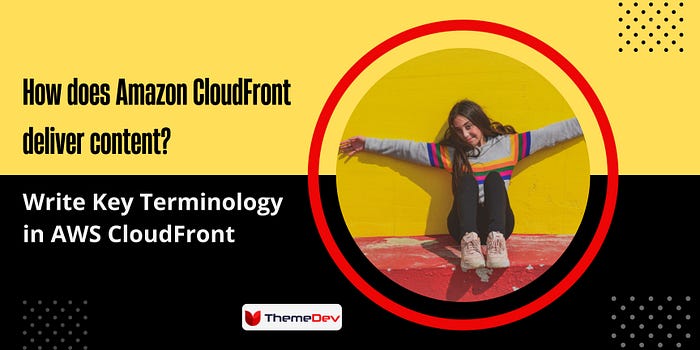How does Amazon CloudFront deliver content? Key Terminology in AWS CloudFront
One of the top content delivery networks, or CDNs, is AWS Cloudfront. A well-known solution that offers scalable functionality for web content management and distribution is called CloudFront.

With low latency and high transfer rates, it processes and delivers both static and dynamic web information as well as video and application files.
What is AWS CloudFront?
Amazon Web Services runs Amazon CloudFront, a content delivery network (also known as Amazon CDN or Amazon CDN Services). It expedites the delivery of your clients’ access to your static and dynamic web content, including.html,.css,.js, and picture files. By discussing its functionality, advantages, use cases, and pricing, this serves as an introduction to Amazon CloudFront and a starting point for getting started with it. Finally, we assist you in setting up and utilizing your CloudFront Distribution.
How does Amazon CloudFront deliver content?
Once an Amazon S3 Bucket or HTTP Server is set up, a CloudFront distribution is created to tell CloudFront where you want the content to be delivered and details about tracking and managing content delivery.
CloudFront then uses edge servers that are close to your viewers to deliver content quickly when someone accesses it.
Steps to configure CloudFront to deliver content :
- When the origin servers such as the Amazon S3 bucket or an own HTTP server are specified, CloudFront gets the required files which are then distributed from CloudFront edge locations all over the world.
- Files are uploaded to the origin servers. The files also known as objects, typically include web pages, images, and media files. It can include anything that can be served over HTTP.
- The CloudFront distribution tells CloudFront which origins to get the files from when users request the files through the website or application. CloudFront also logs all the requests and distribution can be enabled as soon as it’s created.
- A domain is assigned to the new distribution that can be found in the CloudFront console or an alternate domain can be used instead.
- The distribution is sent across to all the edge locations or points of presence collections that are collections of servers in geographically dispersed data centers where CloudFront caches a copy of the data.
Key Terminology in AWS CloudFront.
Edge Locations: A worldwide network of data centers that deliver content to the end-user are called edge Locations.
Latency: It is a measure of delay or time data takes to get to its destination from the source point.
Amazon Content Delivery Network (AWS CDN): A content delivery network (CDN) represents a group of servers that are geographically distributed over the globe and provide a fast delivery.
Amazon S3 Bucket: An Amazon S3 bucket is a public cloud storage resource available in Amazon Web Services.
Origin Access Identity: An Origin Access Identity (OAI) is used for sharing private content via CloudFront. The OAI is a virtual user identity that will be used to give your CF distribution permission to fetch a private object from your origin server (e.g. S3 bucket).
Since now you are familiar with the key terminology, let’s move on to the benefits of CloudFront.
Amazon CloudFront Delivers Private Media Exceptionally Quickly
Selling digital products using WooCommerce or Easy Digital Downloads? You might want to keep members-only films and other content hidden if you run a membership website. You may use Next3 to set up Amazon CloudFront so that it serves part of the contents in your bucket to the general public while safeguarding and serving other files to users who are logged in only.
Hope This was helpful.
Thank You.


Comments
Post a Comment